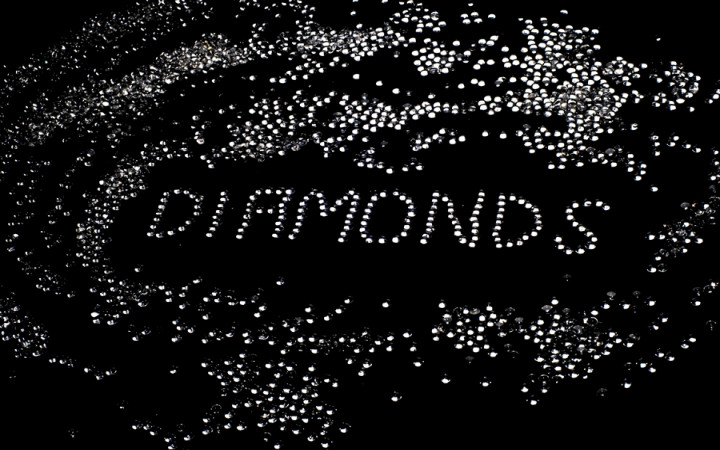Some of our gemologist Wonder friends probably know the different ways to tell the difference between real gold and fool's gold, but do you know how to tell the difference between real diamonds and fake diamonds?
Of course, if you have a particular diamond — or what you think is a diamond — and it's important to know about its authenticity for purposes of determining its value, there's really no substitute for taking it to a jeweler to have it authenticated and appraised. But there are some tests you can perform on your own to give you an idea of whether the gem you're dealing with is a legitimate diamond or a fake.
Some of you may be thinking this should be an easy task. After all, diamonds are special gemstones that are easy to recognize, right? Not so fast! Today, there are many gemstones that are produced synthetically to look like diamonds. They're usually much cheaper and thus provide competition for real diamonds in the jewelry marketplace.
One of the most popular of these synthetic gemstones is known as CZ, which stands for cubic zirconia. Cubic zirconia is the cubic crystalline form of zirconium dioxide. When synthesized in a laboratory of factory, the resulting gemstones are usually hard, flawless, and colorless. Their resemblance to real diamonds has made them a popular, cheaper alternative to sometimes pricey real diamonds.
Synthetic moissanite is a more recently-developed synthetic gemstone that can also mimic a real diamond. Fake diamonds have often been made out of simple glass, too.
So how can you tell if you're dealing with a real diamond? There are several tests and guidelines you can use. For example, one popular technique involves placing the gemstone over a newspaper or other piece of printed text. If you can read the text or see clear indications of lines, circles, or even full letters, you've probably got a fake. Real diamonds refract light so thoroughly that you wouldn't be able to see much of anything.
Another guideline involves evaluating the weight of the stone. Cubic zirconia will weigh about 50-100% more than a real diamond of similar size. Of course, if you're not used to weighing diamonds, this test might not help you all that much.
If you have a magnifying glass or a microscope handy, you can examine and compare stones up close. If you look for scratches and scuffs, you'll notice that a cubic zirconia of any age will likely have at least some small scratches and scuffs. These are highly unlikely to be found on real diamonds, because they are much harder. Likewise, the edges of a real diamond will appear much sharper, because their hardness allows them to be cut with ultra-sharp edges.
If you ask people how to tell the difference between real and fake diamonds, you may hear about a couple of other tests that seem popular. Be warned, however, that these tests may not be very accurate with today's synthetic gemstones.
For example, one old adage holds that a real diamond will cut glass, whereas a fake will not. While it's true that diamonds are hard enough to cut glass, some synthetic gems can also scratch glass.
You may also be advised to breathe on a gem like you would to fog up a mirror. Because diamonds are good conductors of heat, the fog from your breath should vanish almost instantly on a real diamond. Unfortunately, synthetic moissanite can also pass this simple test.
If you really want to be sure about the authenticity of a diamond without consulting a jeweler, you can purchase a gizmo known as a diamond tester. These devices usually test the thermal and electrical conductivity of a stone to verify that it is indeed a real diamond.




